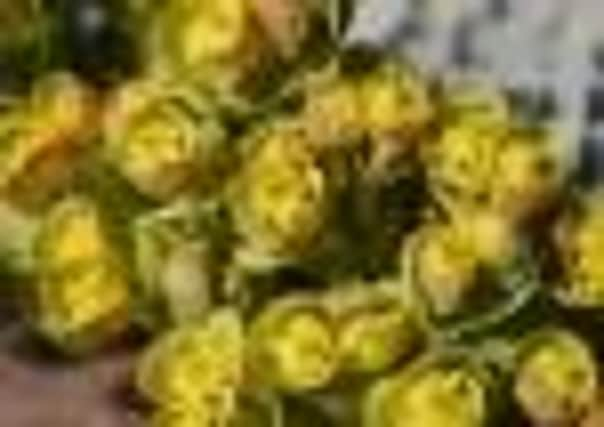Good value for money plants


Flower is the wrong word, as their flowers are small and insignificant, but are surrounded by conspicuous showy bracts (modified leaves) which remain attractive for several weeks, usually in shades of yellow or lime green, but a vivid red in varieties such as the aptly named Fireglow.
At the entrance to Clumber’s walled garden we have planted Euphorbia myrsinites. It bears trailing shoots, usually no more than 6inches/15cm tall with succulent blue-grey evergreen leaves.
Advertisement
Hide AdAdvertisement
Hide AdTwo other low growing species are worth considering. E. polychroma forms a rounded mound about 18ins/45cm tall and wide. Its bracts are yellow shading to lime green and appear over several weeks. The ‘cypress spurge’, E. cyparissias, grows to about 16ins/40cm and has attractive feathery foliage topped with yellow bracts. In spite of its small stature it is best not planted in a rockery amongst choice alpines as it tends to spread rapidly. Its variety ‘Clarice Howard’ has dark red and purple leaf colouring, whilst ‘Orange Man’ turns rich orange in autumn as the foliage dies back.
For the mixed border, euphorbias make ideal companions to bulbs, annuals, ferns and shrubs. They combine well with other May flowerers and variegated or foliage shrubs. If you like hot colours, then E. griffithii ‘Fireglow’ and ‘Dixter’ will be to your liking. These grow around 3ft/90cm, with a spread of 2ft/60cm, and bear bracts in bright red and orange-red. They are happy in a sunny place protected from wind.
Final choice, and around 4ft/1.2m, is the evergreen E. characias. Foliage has blue-grey shades and flower heads are large, lime-green to yellow with dark brown centres. There are also forms with variegated foliage, such as ‘Burrow’s Silver’, which has cream edges to the leaves.
A word of caution, as with their tender cousin the poinsettia (E. pulcherrima), the milky white sap of euphorbias can cause skin irritation, so wear gloves when weeding around or cutting back.
Jobs for June
Advertisement
Hide AdAdvertisement
Hide AdWe can expect frosts until the end of the month, so don’t be in a hurry to plant out tender bedding plants or tender vegetables like sweet corn or runner beans. These are best gradually acclimatised to outdoor conditions, by putting them outside during the day, bringing them in at night, and then leaving them outside at night, but covering them with fleece.
Lawns will now be growing apace and will need mowing weekly. The height of cut of your mower can be lowered to around 1inch/2.5cm.
Continue sowing salad leaves, carrots, beetroot and peas. Plant tender corms, bulbs and tubers such as dahlias and gladioli.